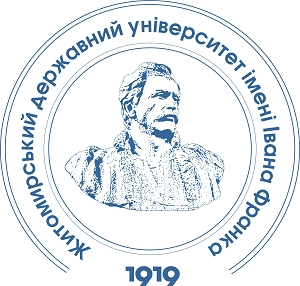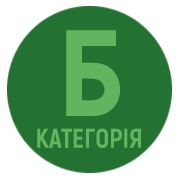DYNAMICS OF ZINC, MAGNESIUM AND COPPER CONTENT IN THYMUS CELLS OF ANIMALS UPON ADMINISTRATION OF SULFATES OF THESE METALS
DOI:
https://doi.org/10.32782/naturaljournal.12.2025.4Keywords:
correlations, cytochemical reactions, immune system, intracellular metalsAbstract
Zinc, magnesium and copper are very important elements in the human and animal body. They affect the activity of various physiological systems, including the immune system. These metals determine the work of all links of immunity, as well as the thymus gland – the central organ of immunogenesis.Zinc, magnesium and copper deficiency is accompanied by gradual atrophy of the thymus and leads to a significant disruption of the processes of cellular and humoral immunity. Therefore, studies of the content of metals in cells of the immune system, in particular the thymus gland, are relevant.The aim of the study was to study changes in the content of zinc, magnesium and copper in thymic epithelial cells (TEC) of mice and rats upon administration of sulfates of these metals. Previously, such studies were not conducted due to the lack of perfect methods for the cytochemical determination of these metals in thymus cells. The development in our laboratory of cytochemical reactions of 8-(paratoluenesulfonylamino)-quinoline on zinc, lumomagnesone on magnesium and lumocupferone on copper in TEC allowed us to conduct the following studies. Pearson’s correlation coefficient (r) was calculated to assess the degree of relationship between changes in the studied parameters. It was found that in the thymus cells of mice and rats after the administration of zinc and magnesium sulfates, the content of these metals increased against the background of copper deficiency. Under the influence of copper sulfate, copper accumulation was observed in the TEC of animals, as well as zinc and magnesium deficiency. The correlation analysis conducted showed the synergistic nature of the relationship in the cells of zinc and magnesium, and the antagonistic relationship between these metals and copper. The practical significance of the work lies in the fact that the results obtained make it possible to correct immunological status disorders with zinc, magnesium and copper preparations, as well as a diet enriched with these metals.
References
Акімов О.Є., Кузнецова Т.Ю., Соловйова Н.В., Міщенко А.В., Заколодна О.Е., Соловйов В.В. Роль цинку в організмі людини та шляхи подолання його дефіциту. Актуальні проблеми сучасної медицини. Вісник Української медичної стоматологічної академії. 2023. Т. 23. № 3. С. 246–249. https://doi.org/10.31718/2077–1096.23.3.246.
Зайченко Г.В., Горчакова Н.О., Шумейко О.В., Клименко О.В., Дорошенко А.І. Фармакологічні властивості препаратів цинку. Український журнал медицини, біології та спорту. 2021. Т. 6. № 3. С. 37–44. https://doi.org/10.26693/jmbs06.03.037.
Abramson J., Anderson G. Thymic epithelial cells. Annu. Rev. Immunol. 2017. Vol. 35. Р. 85–118. https://doi.org/10.1146/annurev-immunol-051116-052320.
Boukaiba N., Flament C., Acher S., Chappuis P., Piau A., Fusselier M., Dardenne M., Lemonnier D. A physiological amount of zinc supplementation: effects on nutritional, lipid, and thymic status in an elderly population. Am. J. Clin. Nutr. 1993. Vol. 57. № 4. Р. 566–572. https://doi.org/10.1093/ajcn/57.4.566.
DiSilvestro R.A., Dardenne M., Joseph E. Comparison of thymulin activity with other measures of marginal zinc deficiency. Biol. Trace Elem. Res. 2021. Vol. 199. № 2. Р. 585–587. https://doi.org/10.1007/s12011-020-02159-y.
Fiorentini D., Cappadone C., Farruggia G., Prata C. Magnesium: biochemistry, nutrition, detection, and social impact of diseases linked to its deficiency. Nutrients. 2021. Vol. 13. № 4. Р. 1–44. https://doi.org/10.3390/nu13041136.
Heugten E., Spears J.W., Kegley E.B., Ward J.D., Qureshi M.A. J. Anim. Sci. 2003. Vol. 81. № 8. Р. 2063–2071. https://doi.org/10.2527/2003.8182063x.
Jin S., He L., Yang C., He X., Chen H., Feng Y., Tang W., Li J., Liu D., Li T. Crosstalk between trace elements and T-cell immunity during early-life health in pigs. Sci. China Life Sci. 2023. Vol. 66. № 9. Р. 1994–2005. https://doi.org/10.1007/s11427-022-2339-0.
Keen C.L., Reinstein N.H., Goudey-Lefevre J., Lefevre M., Lönnerdal B., Schneeman B.O., Hurley L.S. Effect of dietary copper and zinc levels on tissue copper, zinc, and iron in male rats. Biol. Trace Elem. Res. 1985. Vol. 8. № 2. Р. 123–136. https://doi.org/10.1007/BF02917466.
Kiouri D.P., Tsoupra E., Peana M., Perlepes S.P., Stefanidou M.E., Chasapis C.T. Multifunctional role of zinc in human health: an update. EXCLI J. 2023. Vol. 22. № 4. Р. 809–827. https://doi.org/10.17179/excli2023-6335.
Kręzel A., Maret W. The Bioinorganic Chemistry of Mammalian Metallothioneins. Chem. Rev. 2021. Vol. 121. № 23. Р. 14594–14648. https://doi.org/10.1021/acs.chemrev.1c00371.
Prykhodko O., Avilova O., Dmytruk S., Ponyrko A., Gordienko O., Prykhodko E. Нistoultrastructural features of thymocytes due to the impact of the experimental general dehydration of a mild degree. Wiad. Lek. 2023. Vol. 76. № 8. Р. 1709–1716. https://doi.org/10.36740/WLek202308101.
Reggiani P., Morel G., Cоnsole G.M., Barbeito C.G., Rodriguez S.S., Brown O.A., Bellini M.J., Pléau J., Dardenne M., Goya R. The thymus-neuroendocrine axis: physiology, molecular biology, and therapeutic potential of the thymic peptide thymulin. Ann. N. Y. Acad. Sci. 2009. Vol. 1153. Р. 98–106. https://doi.org/10.2174/1381612820666140130211157.
Reggiani P.C., Schwerdt J.I., Console G.M., Roggero E.A, Dardenne М., Goya M.R. Physiology and therapeutic potential of the thymic peptide thymulin. Curr. Pharm. Des. 2014. Vol. 20. № 29. P. 4690–4696. https://doi.org/10.1111/j.1749-6632.2008.03964.x.
Renata R.N., Arely G.A., Gabriela L.A., Esther M.M. Immunomodulatory role of microelements in COVID-19 outcome: a relationship with nutritional status. Biol. Trace Elem. Res. 2023. Vol. 201. № 4. Р. 1596–1614. https://doi.org/10.1007/s12011-022-03290-8.
Rizwan M., Cheng K., Gang Y., Hou Y., Wang C. Immunomodulatory effects of vitamin d and zinc on viral infection. Biol. Trace Elem. Res. 2025. Vol. 203. № 1. Р. 1–17. https://doi.org/10.1007/s12011-024-04139-y.
Saglietti F., Girombelli A., Marelli S., Vetrone F., Balzanelli M. G., Tabaee Damavandi P. Role of magnesium in the intensive care unit and immunomodulation: a literature review. Vaccines (Basel). 2023. Vol. 11. № 6. Р. 1112–1122. https://doi.org/10.3390/vaccines11061122.
Srivastava T., Wanjari N. Copper and its isotopes: a brief overview of its implications in geology, environmental system, and human health. Isotopes Environ. Health Stud. 2024. Vol. 60. № 6. Р. 642–667. https://doi.org/10.1080/10256016.2024.2410290.
Wang X., Zhang M., Ma J., Tie Y., Wang S. Biochemical markers of zinc nutrition. Biol. Trace Elem. Res. 2024. Vol. 202. № 12. Р. 5328–5338. https://doi.org/10.1007/s12011-024-04091-x.
Xie Y., Zhang Q., Wang L., Wang Y., Cheng Zh., Yang Z., Yang W. The effects of partially or completely substituted dietary zinc sulfate by lower levels of zinc methionine on growth performance, apparent total tract digestibility, immune function, and visceral indices in weaned piglets. Animals (Basel). 2019. Vol. 9. № 5. Р. 236. https://doi.org/10.3390/ani9050236.






